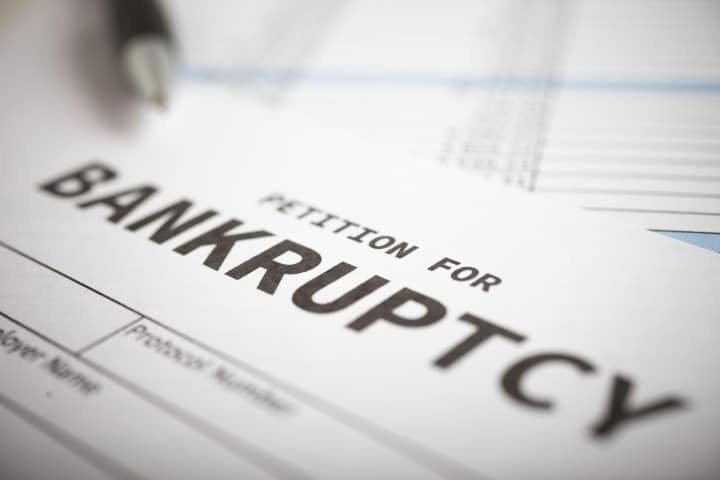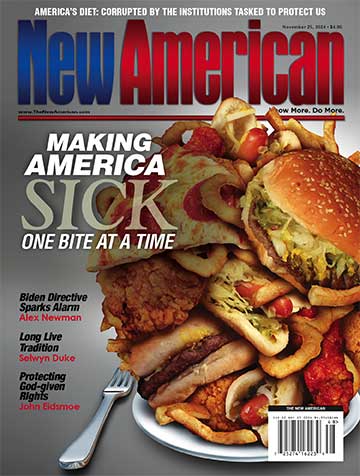
It appears that another left-leaning media outlet is going under. Just weeks after fellow traveler Buzzfeed shut down and became a part of HuffPost’s brand, Vice appears to be headed toward bankruptcy. Vice — valued at nearly $6 billion in 2017 — has been unable to find a buyer willing to pay even the $1 billion sales price needed to save the company from declaring itself insolvent.
As The New York Times reports:
Vice, the brash digital-media disrupter that charmed giants like Disney and Fox into investing before a stunning crash-landing, is preparing to file for bankruptcy, according to two people with knowledge of its operations.
The filing could come in the coming weeks, according to three people familiar with the matter who weren’t authorized to discuss the potential bankruptcy on the record.
The nearly-30-year history of Vice reads like a who’s who of liberal establishment investment into a media company tailor-made to create social change in a leftward direction. From the Wikipedia article on Vice:
Vice Media founders Shane Smith, Suroosh Alvi, and Gavin McInnes launched the magazine Voice of Montreal in October 1994 in Montreal, Quebec, Canada with government funding, to cover music, art, trends and drug culture not covered in print. The magazine was an alternative to the Montreal Mirror, then perceived as too mainstream by the Montreal alternative English-speaking scene.
In 1996, the name was changed to Vice, and in 1999, the company was relocated to New York City. With continued investment from leftist financiers, Vice expanded to have operations on five continents. News coverage by Vice was marked from the beginning by a liberal slant that went far left of mainstream liberalism. Investments from Disney, A&E, 21st Century Fox, and — wait for it — Soros Fund Management not only kept the company afloat, but allowed it to continue growing. As mentioned above, Vice was valued at $5.7 billion in 2017. In 2016, the company had annual revenues of $1 billion.
But that was then — this is now.
As the Times reports, “In 2017, after a funding round from the private-equity firm TPG, Vice was worth $5.7 billion. But today, by most accounts, it’s worth a tiny fraction of that.” The Times article goes on to say:
The company has been looking for a buyer, and still might find one, to avoid declaring bankruptcy. More than five companies have expressed interest in acquiring Vice, according to a person briefed on the discussions. The chances of that, however, are growing increasingly slim, said one of the people with knowledge of the potential bankruptcy….
In the event of a bankruptcy, Vice’s largest debtholder, Fortress Investment Group, could end up controlling the company, said one of the people. Vice would continue operating normally and run an auction to sell the company over a 45-day period, with Fortress in pole position as the most likely acquirer.
Disney — which entertained and explored the idea of buying Vice for $3 billion in 2015 — is prepared to take a loss with Vice’s expected bankruptcy, according to the Times’ sources. It appears that the House of Mouse would prefer to lose what it has invested than to continue throwing good money after bad. On Monday, Vice released a statement saying it has “been engaged in a comprehensive evaluation of strategic alternatives and planning,” adding that “the company, its board and stakeholders continue to be focused on finding the best path for the company.”
It appears that best possible path is bankruptcy. Vice — which has survived and even flourished as the recipient of investor cash over the past 29 years — is seeing the investor bubble burst. It appears that the company has likely never been actually profitable, but has merely gotten along on the same tactic it has used to sell “news” to consumers. That tactic is best described in a single word: Hype.
And while misleading click-bait articles may keep uninformed consumers coming back, promises of rewards tomorrow in the face of the lack of actual profitability today do not seem to be enough to keep investors coming back — especially when one of them can simply assume control as part of the bankruptcy settlement. After all, why should Fortress Investment Group offer any price at all for a company it can simply own as soon as that company is forced to legally declare itself insolvent?
As stated at the beginning of this article, Vice’s fate seems to follow that of Buzzfeed, which announced in late April that it would be moving operations over to HuffPost, another company owned by the parent company of Buzzfeed.
This announcement came months after Buzzfeed laid off 15 percent of its writing staff and transferred those jobs to artificial intelligence in January. The move to AI-generated content caused a 150-percent spike in Buzzfeed’s stock, but even that was not enough to save the media company — famous for its “listicle” form of pseudo-journalism — from financial collapse.
As for Vice, the company valued at nearly $6 billion just six years ago has somehow failed to ride the woke wave so prevalent since 2016, and now finds itself without a realistic prospective buyer willing to save it from bankruptcy. Perhaps that is not so surprising, for while woke is a badge of honor for extreme leftists, it is not a profitable model. The expression “Go woke, go broke” comes to mind. But while Bud Light seems to be the poster child for evidence of that expression, it seems that companies such as Vice and Buzzfeed may require a slight alteration: This writer offers — for your approval — “Stay woke, go broke,” because it appears that the woke wave has crashed upon the shore of financial reality.
And while this should serve as a cautionary tale for other woke companies — especially in media — woke and logic do not appear to be on speaking terms. Many such companies will learn the “woke equals broke” lesson the hard way.




